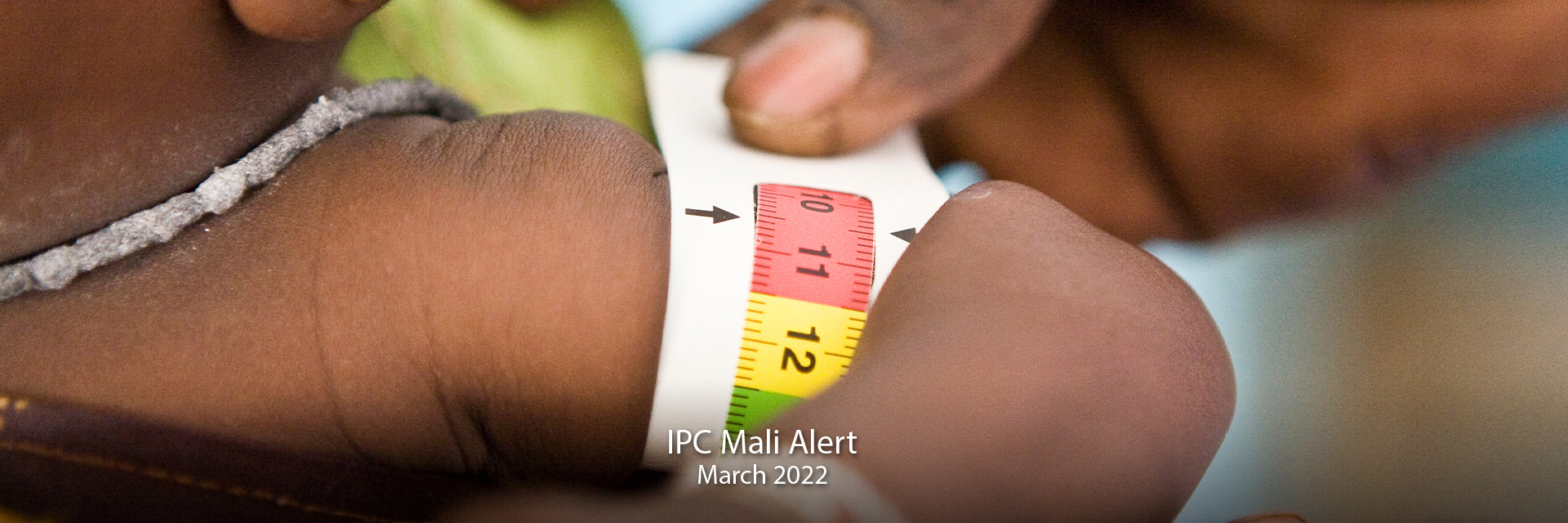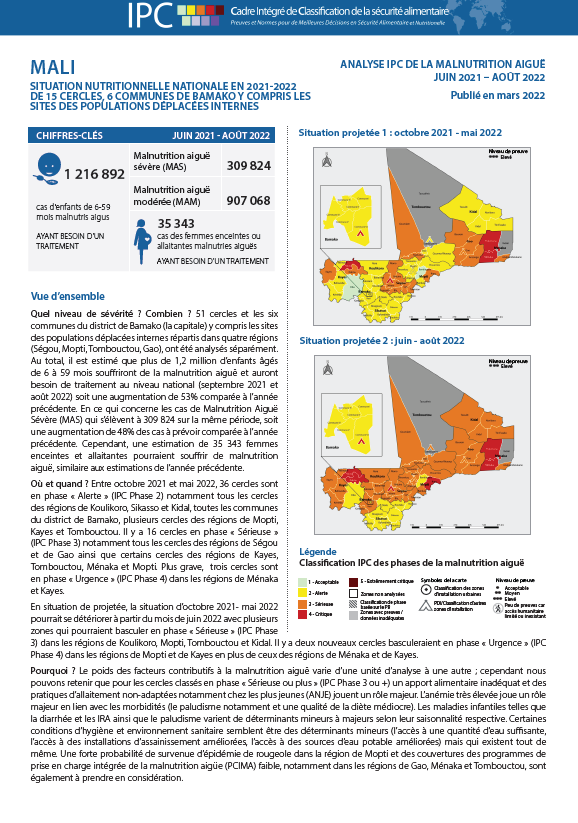
- © Unicef
Mali: Over 1.2 million children under five likely acutely malnourished through August 2022
Overview
An IPC Acute Malnutrition analysis of Mali - covering 51 administrative subdivisions and six communes of Bamako Capital District including the internally displaced people sites of four regions (Gao, Mopti, Ségou and Timbuktu) - revealed that over 1.2 million children under the age of five will likely be acutely malnourished through August 2022, due to high levels of food insecurity and diseases. This includes over 300,000 severely malnourished children in need of urgent and adequate treatment. Over 35,000 pregnant and lactating women will also likely be acutely malnourished.
This serious nutritional situation is the result of a combination of several contributing factors, mainly the poor quality of food resulting from inappropriate feeding practices of young children, recurrent food insecurity in certain areas, high rates of anemia, high prevalence of childhood diseases (particularly malaria, diarrhea and acute respiratory infections) and a resurgence of measles outbreaks. Other factors include low coverage of Integrated Management of Acute Malnutrition (IMAM) programs, poor hygiene conditions (inaccessibility of adequate sanitation facilities), low coverage of access to drinking water and the negative impacts of inter-community conflicts and the volatile security situation in some regions.
Download the Snapshot: English French
Report
Between October 2021 and May 2022, a period that coincides with a decline in acute malnutrition cases, 16 administrative subdivisions and three Internally Displaced People (IDP) sites will likely be in a Serious nutritional situation (IPC Phase 3) and three other administrative subdivisions in a Critical situation (IPC Phase 4). Between June and August 2022, the peak period for acute malnutrition, a progressive deterioration in the nutritional situation is expected, with 37 administrative subdivisions and four IDP sites likely in a Serious condition and five administrative subdivisions and one IDP site likely in a Critical condition. The deterioration of the nutritional situation during this peak period of malnutrition will be much more severe if effective and coordinated measures to treat malnutrition and mitigate contributing factors are not taken in all regions concerned.
Télécharger le rapport
Actions Needed
- Provide humanitarian assistance: Provide treatment for all children under five and pregnant and lactating women suffering from acute malnutrition. Strengthen the emergency food aid system for populations in CH Acute Food Insecurity Phase 3 or above.
- Take actions for early prevention: Strengthen measles vaccination coverage and vitamin A supplementation, particularly in the Mopti region. Strengthen malaria and diarrhea prevention and management.
- Promote good caring and feeding practices: Strengthen good infant and young child feeding practices (exclusive breastfeeding, dietary diversification, promotion of local food consumption).
- Increase access to safe water and adequate sanitation: Improve food utilisation and its impact on nutrition by facilitating people’s access to safe water sources, while intensifying hygiene and sanitation awareness and services.
- Monitor risk factors: Cases of malnutrition, measles outbreaks, disease peaks, availability and access to food resources and commodities, price of foodstuffs on the markets, agricultural and pastoral lean season access to health services, access to improved drinking water, particularly in conflict areas and among IDPs, COVID-19, the evolution of the security situation, population displacement.
IPC Classification Maps
Current: June - September 2021

First projection: October 2021 - May 2022

Second projection: June - August 2022

Join our mailing list


